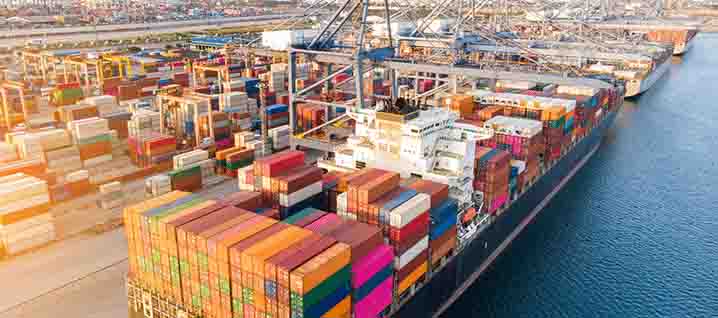By Wasana Nadeeshani Sellahewa
(Commonwealth) _ Shipping alliances allow carriers to pool their resources. Read on to learn more about these agreements, as well as the recent dissolution of the 2M alliance between Maersk and MSC. Low price and broad service coverage are two critical components that carriers must provide in order to be successful. Three major shipping alliances (2M, THE Alliance, and Ocean Alliance) were created to help with this. Carriers were able to grow their worldwide consumer base and provide affordable pricing by joining partnerships.
After 7 years of collaboration, two major carriers, Maersk and MSC, have terminated their 2M partnership. According to the conditions of the agreement, they would totally separate all of their businesses by 2025.
Maersk and MSC have a significant client base, and consumers were understandably concerned about how this termination might affect them. Both carriers, however, have stated that the breakup would have no immediate impact on their services.
A shipping alliance, also known as an ocean alliance, is a group of ocean carriers who get together to form a cooperative arrangement. This agreement includes a variety of economic routes through worldwide collaboration among its members.
These cooperative carriers enter into vessel-sharing arrangements in order to cover as much of the shipping market as feasible. Carriers basically merge their cargo ship fleets within each alliance. This allows them to use vessels owned by other carriers. Carriers frequently agree to move containers as well.
You’re probably asking why carriers form such alliances. Shipping alliances assist companies in establishing a monopoly in the ocean shipping sector. You might be shocked to learn that, according to Alphaliner’s assessment of all shipping lines, the three biggest alliances accounted for 80% of the worldwide container industry. Leaving just 20% for smaller global/regional airlines.
Let’s learn more about these three key alliances and how the 2M alliance’s demise will effect the container industry. The Danish shipping line Maersk and the Swiss-Italian shipping corporation Mediterranean Shipping Co created the 2M partnership (MSC). The alliance, which covers Asia-Europe, trans-Pacific, and trans-Atlantic trade corridors, was created in 2015. The HMM also joined 2M for a three-year cooperation in 2017 and afterwards joined THE Alliance.
Maersk and MSC stated in January 2023 that they will end their cooperation by 2025. The 2M agreement included a minimum duration of 10 years and a 2-year termination notice period. The termination of 2M may mark the start of a major industry-wide reworking of present operating contracts, notably on critical east-west trades.
So, how does this halt affect others in the shipping industry? Because both businesses manage almost one-third of the world’s container capacity and have over 4 million TEUs on their own, there will undoubtedly be some spillover effects.
To begin with, it will increase rivalry between Maersk and MSC. As freight forwarders, you may see a decrease in shipping prices as both corporations compete more directly on the Asia-Europe, Transatlantic, and Transpacific trades.
Similarly, if you are a Maersk or MSC client, you may see some beneficial adjustments in the services supplied in the next years in order to keep and attract new consumers. Experts predict that both corporations will need to expand its ocean fleet to meet the expectations of their customers.
The majority of shipping alliances operate in a similar manner. Stowage planning, vessel assignment, scheduling, and problem-solving are the primary areas of communication and information exchange among enterprises. However, alliances do not include collaborative sales, marketing, pricing, or asset ownership, which separates them from other types of partnerships.
They talk freely how to control fuel kinds, environmental concerns, operational efficiency, and engine breakdowns. Each shipping alliance also includes capacity planning, the participation of each particular carrier, and unique pay. But what benefit do freight forwarders and shippers gain from these alliances? Continue reading to discover out.








